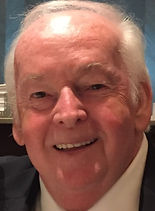top of page


Novelist, Japanese Crime Thrillers
H. A. Bryant
The Tokyo Metropolitan Police
The purpose of this web page is to give you an overview of the TMPD (Tokyo Metropolitan Police Department) or Keishichō (警視庁) as described in the novels. The background photo of this webpage shows the current headquarters of the TMPD with the Keisatsu-chō (警察庁) or the National Police Agency (NPA) headquarters shown just behind it.
First, it is important to note that Japan is not like the U.S. with regard to policing. Although this web page isn’t a comprehensive guide, it is useful to understand the police makeup of Japan. The primary objective is to provide only the foundations needed so that you are able to understand how the police interact with its citizens in Japanese society.
In the Author’s Notes of both novels, the police and judicial processes in Japan regarding the prevention, apprehension, and prosecution of suspects are very accurate. Through interviews with Japanese friends, various books on Japan as well as the Internet, the author was able to gather a lot of this information. Refer to the Author’s Note in both The Unlikely Detective and The Unlikely Detective and the Black Dragon Society for further details.
Japan, like much of Europe, has a national police force, unlike the U.S., which has up to 17,000 different police forces. These forces include local (city, town, and village), county, state, and federal. With a national police force, Japan (a country about the size of California) is more responsive to its society and location. As in the United States, it does not have to worry about overlapping police forces and jurisdictions. Japan’s national police force is made up of only regional, prefectural, and the TMPD. The TMPD includes the Tokyo metropolitan area and the prefectural forces of Tokyo-to (the prefecture of Tokyo and the cities and towns that it is made up of).
The chart below shows the current hierarchy of the Tokyo Metropolitan Police Department.

Note 1: The above chart comes from a TMPD PDF file located here. For more information about each of its bureaus and forces, refer to this PDF.
The TMPD and the regional and prefectural police forces of Japan are under the administration of the National Public Safety Commission, headed by a cabinet minister.
The commission has supervisory authority over the NPA. This body in turn supervises, guides, and coordinates the activities of the TMPD and the separate prefectural forces that are directly under the control of a commission for public safety in each prefecture.
Administrative areas are further divided into precincts, each headed by a police station. Law enforcement is aided by the existence of an extensive network of small neighborhood police boxes or substations (called kōban). There also are several more specialized policing bodies, the largest of which, the Maritime Safety Agency, patrols Japan’s coastal waters.
Within the TMPD, there are nine ranks in the current department: Superintendent General, Senior Commissioner, Commissioner, Assistant Commissioner, Superintendent, Chief Inspector, Inspector, Sergeant, and Police Officer.
Note 2: In the novels, Inspector Suzuki’s title in the TMPD hierarchy is Inspector. However, as of 2013, he would now be called a Chief Inspector (see table below) according to the changes made in the English translation.
In addition to the nine ranks of the Japanese police, the Commissioner General of the NPA holds the highest position. The Deputy Commissioner General of the NPA is a Senior Commissioner.
The Superintendent General is a title held by the Chief of the Tokyo Metropolitan Police Department. The Directors General and Deputy Directors General of the NPA, as well as Chiefs of large prefectural police stations, including Osaka and Kyoto located in the west central part of the country, hold the title of Senior Commissioner.
The table below describes the nine ranks of the Japanese police. The ranks are given in English as well as in Japanese. Throughout the novels, the use of Inspector (for Suzuki and others) is used in place of the title Chief Inspector, as indicated in the Note 2 above.

bottom of page